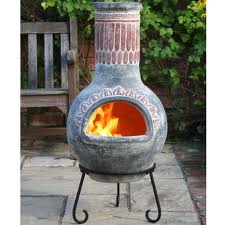From a story in E&E news titled:
Firefighters group optimistic U.S. will let more forests burn
An Oregon-based group that supports using fire to reduce fuel loads in national forests said today it hopes the Forest Service has abandoned a 2012 policy that made it difficult to use wildfires to improve forest health.
Firefighters United for Safety, Ethics and Ecology said a letter last month from Forest Service Chief Tom Tidwell indicates the agency has ditched an aggressive suppression strategy laid out last May by James Hubbard, the agency’s deputy chief of state and private forestry.
“Hubbard’s decree set Forest Service fire policy back 40 years to the days when all wildfires were attacked no matter what the risk to firefighters, the cost to taxpayers or the long-term damage to ecosystems from fighting those fires,” said Timothy Ingalsbee, executive director of FUSEE. “Tidwell should be commended for getting the agency back on track with science-based and economically rational fire management policy that is both safer and smarter for firefighters and the public they serve.”
While Tidwell last year told reporters that the Hubbard memo was not a change in policy, it sparked debate among environmental groups and forestry experts who warned it would stifle some beneficial fires that thin overstocked Western forests and allow certain tree species to regenerate.
Decades of wildfire suppression are widely blamed for the dense, fire-prone forests across the West today.
The Hubbard memo first surfaced in an Aug. 7 article in OnEarth magazine, which is published by the Natural Resources Defense Council.
Ingalsbee said Tidwell’s new wildfire response protocol for 2013 directs line officers to allow some fires to burn for restorative purposes in areas where there are low threats. “Line officers desiring to use wildland fire as an essential ecological process and natural change agent must follow the seven standards for managing incident risk to the highest level of performance and accountability,” Tidwell wrote.
That’s a break from the Hubbard memo, which forced line officers to obtain approval from regional foresters before they let a fire burn for restoration, Ingalsbee said.
Ingalsbee said the Forest Service spent $1.3 billion fighting fires last year, which was $400 million more than was budgeted.
Now if the reason Hubbard issued the letter last year (which I read as “let’s be careful out there”) was because someone told him to be careful (OMB? The Dept.?) (or are we thinking he walked to work one day and said “hmm, I think we’ll require RF approval this year??”) And now we don’t have to be careful (did OMB or the Dept change its mind?) or no, they still have to be careful, but now they don’t have to ask the RF (calling the guy or gal on the phone, not particularly onerous). But perhaps being careful is not “science-based”?
Also it seems to me that if folks were more careful, then they would have spent less than they would have otherwise, which was the point, right?
This thing seems to be a tempest in a teapot (or a wildfire in a chiminea)? There must be something more that has started all the drama.. can anyone help fill in the blanks?
Tidwell Fire Season Letter the Chief’s letter.
Forest Service Wildland Fire Response Protocol the Response Protocol.

Hubbard’s 2012 letter, as I and many of my colleagues read it, was directed at the situation existing during the 2012 season only. The call to control all fires was issued after a number of wildfires in the West had blown out of national forests areas causing damage to private land, watersheds, wildlife habitat, public health, private property, carbon release into the atmosphere and cost the taxpayers millions of dollars.in suppression costs.
As we read the memo there is no intent to stop the use of prescribed fire, only to use some common sense and not mess with fires during the high fire danger part of the summer. Continued use of fire as a management tool is a must, but it has to be used in a way to minimize serious damage to the land, people and the climate.
What is always purposely overlooked is the tying up of fire suppression resources to watch the Let-Burn fires burn for weeks on end, while other more dangerous fires pop up and are understaffed. They pretend that when the inevitable winds come up, they can snuff it out quickly. Not to mention the smoke that causes people to get sick, that causes people to stay indoors and causes health alerts a hundred miles away. The 2007 northern California wildfires had thick, dark smoke that impacted people all the way to Yellowstone!!! I insist that individual Forests do formal EIS’s, to adequately cover the significant impacts of letting fires burn during the peak of wildfire season. This is especially important, now that the sequester seeks to reduce staffing. If the fire folks have the scientific expertise to complete these EIS’s, then show us how the many impacts will be mitigated. (I doubt they can do this, and doubt they will even try)